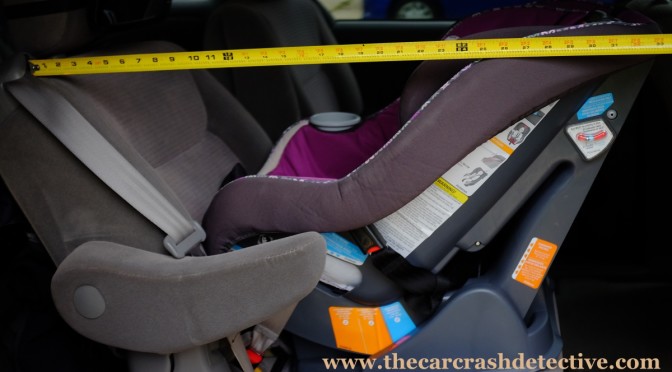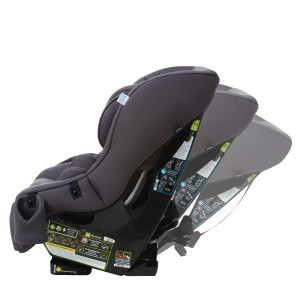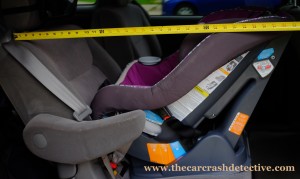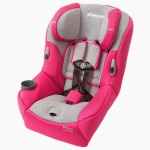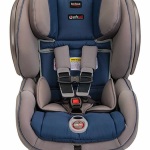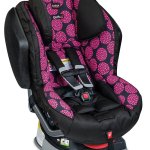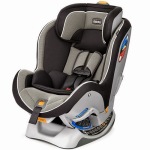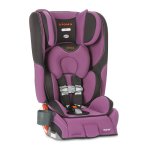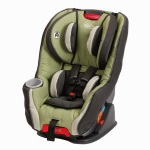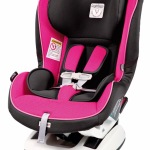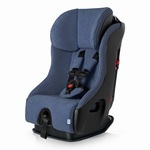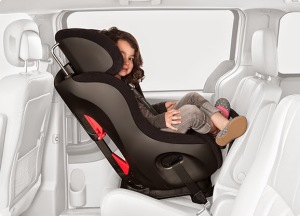
If there’s one thing I’m passionate about when it comes to car seats, it’s about the benefits of extended rear-facing. I’ve written about how it’s the standard in Sweden to rear-face until 4, about affordable seats like the Extend2Fit that can keep kids rear-facing until 5 or beyond, about how to keep toddlers rear-facing, and sadly, about how children can be saved from unimaginably horrible collisions simply by being kept rear-facing.
To put it simply, rear-facing children as much as current car seat designs will safely allow is something I believe in. That’s why when I read the results of polls such as that conducted by C.S. Mott Children’s Hospital about parents rear-facing too early, it spurns me on to keep writing about the need to rear-face. Let’s dig into the details together and see what we can learn from the study.
In 2011, 33% of parents of 1-to 4-year-old children who had been turned to face forward had done so at or before 12 months. Just 16% reported turning their child’s seat at 2 years or older.
But in 2013, 24% of parents of 1- to 4-year-old children who had been turned to face forward made the switch at or before 12 months. Only 23% reported waiting to turn until the child was 2 years old or older.
To put the findings into context, the AAP updated their recommendations for how long children should remain rear-facing in 2011, moving the recommendation from 1 until 2 , or until children had outgrown the height and weight limits of their rear-facing car seat. I wrote about how these recommendations were better, but still far away from best practice. Shortly after the guidelines were released, the hospital polled parents to learn about how long they were actually rear-facing.
Too many parents are still rear-facing for one year or less.
In 2011, 1 out of every 3 parents turned their children forward-facing either at 12 months or before 12 months. This improved to 1 out of 4 parents in 2014. However, that still means a significant number of children were and are placed needlessly at risk by being forward-faced exceptionally early. It’s worth keeping in mind that forward-facing before 1 is against the law in all states.
The majority of parents turn their children forward between 1 and 2.
In 2011, 1 out of every 2 parents turned their children forward between 1 and 2 years. This remained consistent (1 out of 2 parents) in 2014. This was completely legal, as no state required rear-facing past 1 until New Jersey in late 2015, but not everything legal is good. You can buy an amazingly sophisticated radar detector online to reduce your odds of getting caught speeding, but that doesn’t make speeding good for your health.
Too few parents are rear-facing until 2 or later.
In 2011, around 1 out of 6 parents waited until 2 or later to forward-face their children. This improved to 1 out of 4 parents in 2014. Even though the report didn’t specify whether parents stopped rear-facing at 2, 3, or 4, at least making it to 2 is great progress in this country.
Now that we’ve looked at when parents are turning their infants and toddlers forward-facing, let’s look at some of the reasons why they’re doing this.
Why are parents forward-facing too early, despite medical recommendations?
“There are lots of reasons why parents are eager to change from the rear-facing to forward-facing seat: the perception their children are too large, the desire to see their children when driving, and a greater ease of removing their children from a forward facing seat,” says Macy… “But delaying the switch can make a big difference. In Sweden it is culturally accepted that children up to age 4 are in rear-facing seats and child traffic fatalities are among the lowest in the world.”
There they are again, those rear-facing Swedes! I want to shout this from the rooftops at everyone who will listen. The safest thing we can do for our little ones whenever they’re in a car, SUV, minivan, or pickup truck is ensure they’re strapped into a well-fitting and well-installed rear-facing car seat from age zero to age 4.
Beyond that, the reasons Macy lists about why parents want to forward-face early are ones we’ve discussed before here, and ones you’ve likely heard among parents in your circles. Perhaps you’ve even shared these reasons with your spouse or with other parents. But when we know better, we’ve got to do better.
Let’s debunk bad reasons to forward-face early
If you want to see your child, get a mirror. The So Peep an excellent one that we use in both of our vehicles. If you’re worried your kids are too large, don’t! As long as they’re within the height and weight limits, they’re fine; crossed-legs don’t bother kids and rear-facing kids are actually less likely to suffer leg injuries in collisions than forward-facing ones. I won’t deny that it’s sometimes easier to remove a child from a forward-facing seat, but the slight increase in time it might take is worth it, and we might all do well to slow ourselves down by a few seconds now and then. Here’s a book about slower, more peaceful parenting I’ve been enjoying lately.
Mike, I’d like to rear-face past 2 on a small / large budget. What do you recommend?
I’ve had the privilege of reviewing dozens of ERF-capable seats here, but these are my absolute favorite seats right now:
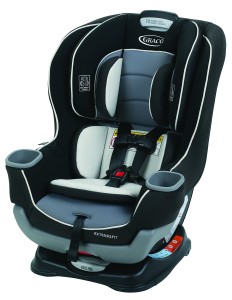 Under $200, I’d strongly recommend the Graco Extend2Fit, Safety 1st Grow and Go EX Air, and Safety 1st Advance EX 65+ Air+. The three seats are very similar, and each is designed to be used from the day your child leaves the hospital until the day s/he weighs 50 pounds. Their height limits mean nearly all kids will make it to 5 rear-facing with them, and lighter children may even make it past 6 or 7!
Under $200, I’d strongly recommend the Graco Extend2Fit, Safety 1st Grow and Go EX Air, and Safety 1st Advance EX 65+ Air+. The three seats are very similar, and each is designed to be used from the day your child leaves the hospital until the day s/he weighs 50 pounds. Their height limits mean nearly all kids will make it to 5 rear-facing with them, and lighter children may even make it past 6 or 7!
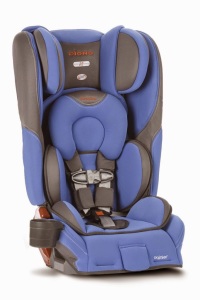 Under $300, my most-recommended seat is the Diono Rainier. If you can find it, the Diono Pacifica is equally safe despite having been discontinued. Again, both seats are almost identical; the main difference lies in the head wings present in the Rainier, which are designed to offer additional side impact protection.
Under $300, my most-recommended seat is the Diono Rainier. If you can find it, the Diono Pacifica is equally safe despite having been discontinued. Again, both seats are almost identical; the main difference lies in the head wings present in the Rainier, which are designed to offer additional side impact protection.
However, the most important part of both seats involves the rear-facing capabilities. Both seats let you rear-face from birth until 50 pounds and have the height limits to make that feasible. They can then be used for quite a while as forward-facing seats, and then, depending on your child, used for some amount of time as booster seats.
 If money’s no object, go with the Clek Fllo or Clek Foonf. Yet again, both seats are very similar, but my top recommendation between the two is the cheaper seat, the Fllo. Combine either seat with the Clek Infant Insert and you can start out rear-facing from birth and keep it up until 50 pounds.
If money’s no object, go with the Clek Fllo or Clek Foonf. Yet again, both seats are very similar, but my top recommendation between the two is the cheaper seat, the Fllo. Combine either seat with the Clek Infant Insert and you can start out rear-facing from birth and keep it up until 50 pounds.
Between these and the Dionos above, I prefer the Fllos and Foonfs for smaller or narrower vehicles and the Dionos if you want to hold on to a seat in forward-facing mode for a longer amount of time before needing a new one.
The point here isn’t to choose one particular seat over another nearly as much as it is to keep rear-facing as long as possible, and ideally until 4 or even beyond that if you can find a seat that will allow you to. Your child will continue to reap the benefits for years.
 If you find my information on best practices in car and car seat safety helpful, you can do your shopping through this Amazon link. Canadians can shop here for Canadian purchases. Have a question or want to discuss best practices? Join us in the forums!
If you find my information on best practices in car and car seat safety helpful, you can do your shopping through this Amazon link. Canadians can shop here for Canadian purchases. Have a question or want to discuss best practices? Join us in the forums!

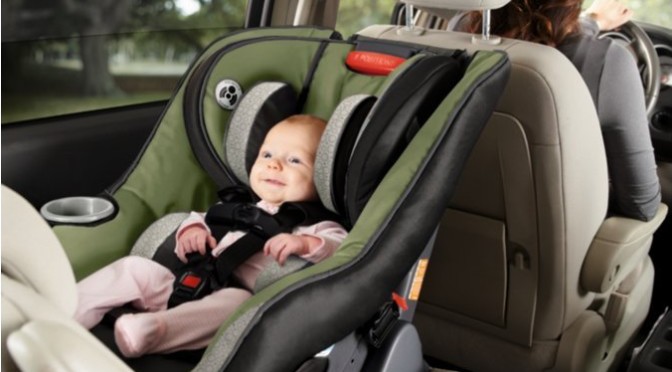
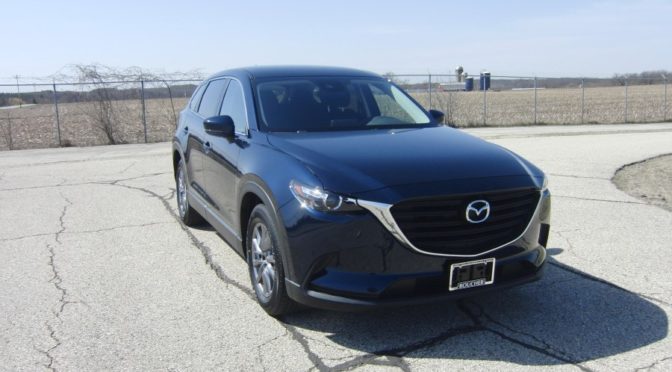
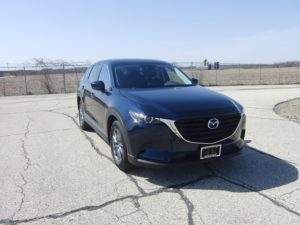 2016, 2017, 2018 Mazda CX-9 (TC)
2016, 2017, 2018 Mazda CX-9 (TC)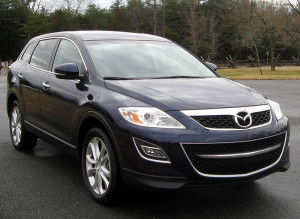 2007, 2008, 2009, 2010, 2011, 2012, 2013, 2014, 2015 Mazda CX-9 (TB)
2007, 2008, 2009, 2010, 2011, 2012, 2013, 2014, 2015 Mazda CX-9 (TB)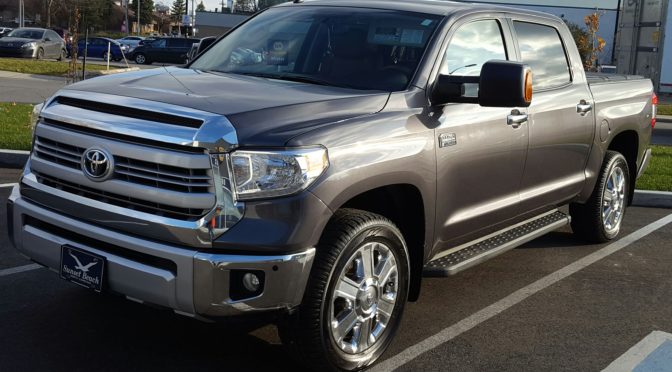
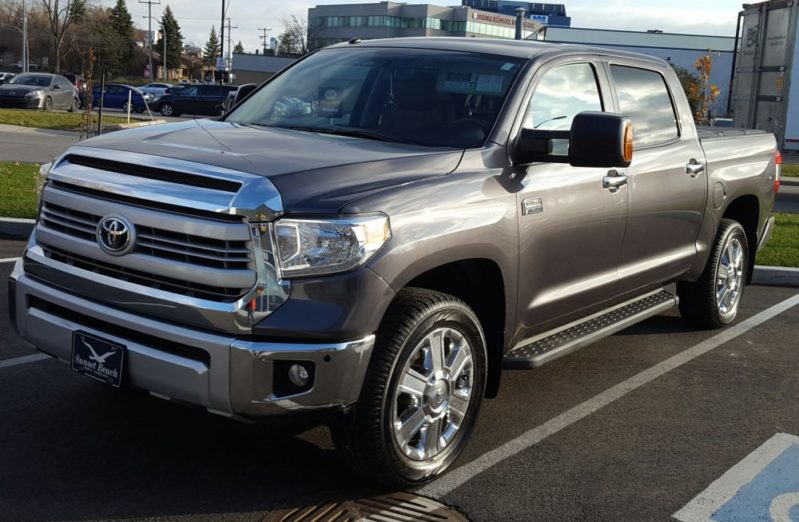
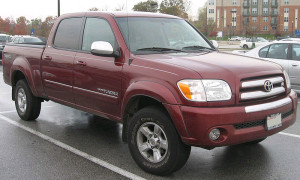
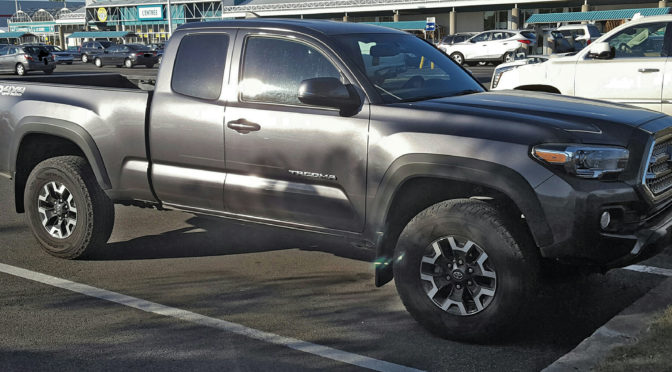
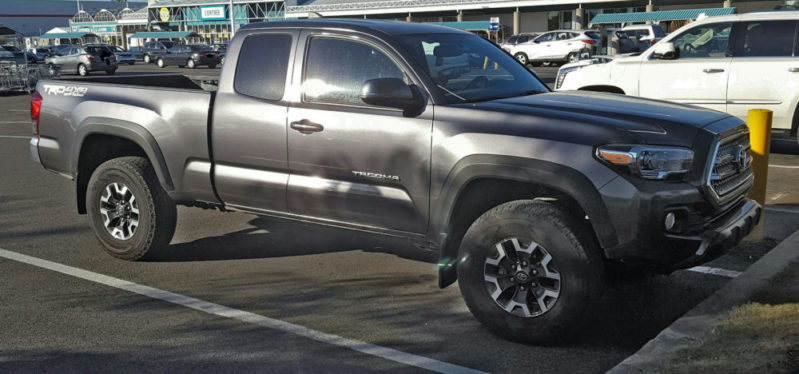 2016, 2017, 2018, 2019, 2020 Toyota Tacoma
2016, 2017, 2018, 2019, 2020 Toyota Tacoma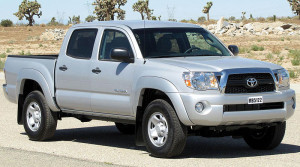 2005, 2006, 2007, 2008, 2009, 2010, 2011, 2012, 2013, 2014, 2015 Toyota Tacoma
2005, 2006, 2007, 2008, 2009, 2010, 2011, 2012, 2013, 2014, 2015 Toyota Tacoma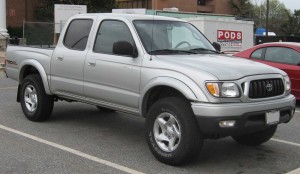 1995, 1996, 1997, 1998, 1999, 2000, 2001, 2002, 2003, 2004 Toyota Tacoma
1995, 1996, 1997, 1998, 1999, 2000, 2001, 2002, 2003, 2004 Toyota Tacoma